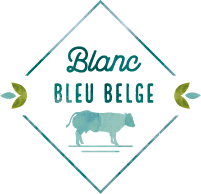Emergence of the breed
One has to go back to the beginning of the past century to see the first selection attempts to breed a dual purpose animal from fairly uniform local cattle and the very popular Sorthorns widely used in the second part of the 19th century. However, everything was called into question when the First World War broke out. It was only in 1919 that an Agricultural Charter was developed in the form of a Royal Decree which paved the way for further breed development. The selection work started up again, but with a clear objective: a rectangular «dual purpose» breed of cattle, with a good stature, average muscle structure and good milk production (4.000 litres at 3.5%). This trend was firmly maintained until 1950.
The years from 1950 to 1960 were a period of transition, during which the early signs of a new orientation became clearly visible. But the watershed occurred between 1960 and 1970. First for bulls and later for cows, a clear preference was granted to the muscular development. The response to this selection was remarkable. A new type of breed appeared, combining significant muscle development (shoulders, withers, back, loin, and hind quarters), size, fine but solid bone structure, harmonious contours with round ribs, inclined rump, hidden hips and detached tail. In 1973, the breed, hitherto called race de Moyenne et Haute Belgique was renamed Belgian Blue Breed divided into 2 distinct branches: the meaty type and the dual purpose type.







